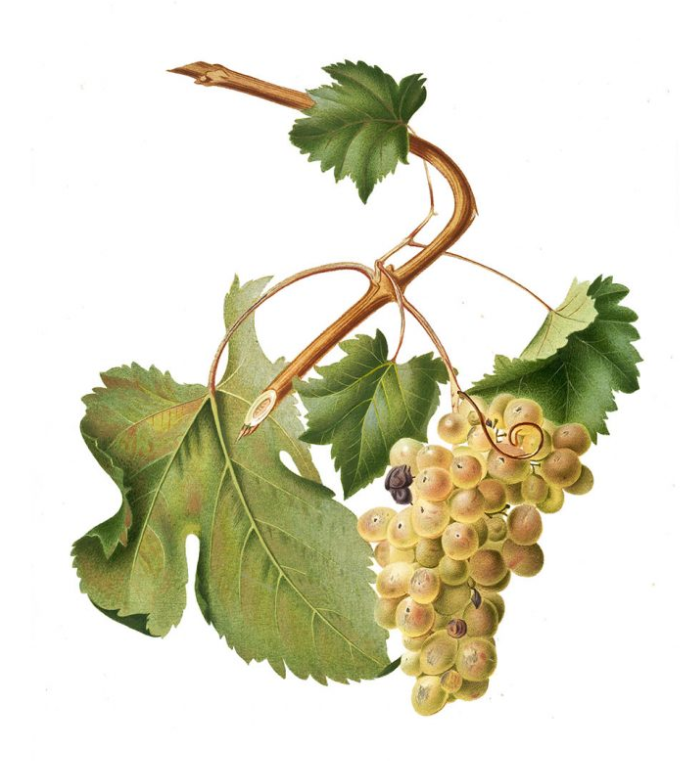This phrase, which perfectly defines the vine and its semicircular spread around the Mediterranean Sea, is the title of the monograph that Professor Fregoni dedicated to Vermentino in 2007. Unlike the other minor white varieties grown in Piedmont, Favorita is more widespread and with other names and other biotypes (Vermentino, Pigato, Malvoisie à gros grain, Rolle, Carica l’asino) is present in numerous coastal areas or in the first hinterland around the Mediterranean. The total surface area, worldwide, is about 17,000 hectares and of these, just over 6,000 are cultivated in France (in Provence, Corsica, where it is the most important white variety and in Languedoc-Roussillon) and about 5,600 in Italy. The region where this vine is most cultivated is Sardinia with about 4300 hectares, followed by Tuscany, Liguria and Piedmont (just over 200 hectares of Favorita).
Since no genetic relationships with other Piedmontese varieties have been found, numerous hypotheses have been formulated on the origin of this vine, but, as often happens, there is no absolute certainty. In the aforementioned monograph and in subsequent revisions, Professor Fregoni formulates the hypothesis that Vermentino, having medium-large bunches and berries “from table grapes”, is part of the Proles pontica and therefore comes from Turkey. Other authors maintain that it comes from Spain (a country that today does not include it among the varieties permitted for cultivation) and from there it then spread to the coastal areas of the Mediterranean and to some islands (Sardinia, Malta). Other authors maintain that it originated in France, but Professor Galet, French, one of the greatest ampelographers of the 20th century, instead indicates that it originates from Italy, probably Liguria.
It is however certain that the first official evidence of its cultivation and winemaking are Piedmontese: it is in fact cited as Fermentino, in 1658, in Montaldeo, in the province of Alessandria and in 1676 it appears, as Favorita wine, in the cellar registers of the Counts of Roero, produced with grapes of the same name from Vezza d’Alba and Guarene.
In Sardinia the first citation seems to be that of Angius in 1840, who places it on the island of La Maddalena, while, as regards Liguria, Gallesio, who also cites it as “Vernaccia di Corniglia”, includes it in his “Pomona italiana” (1834) in which he says that:
“Vermentino is the favorite grape variety of the Genoese area, and the one that enjoys the most widespread reputation among the varieties that are grown from Ventimiglia to Sarzana. Its fertility, the precociousness and sweetness of its grapes, and the qualities of the wine it produces form a set of qualities that are difficult to find together in another vine”.
The same author then describes it in detail, highlighting its appearance as a table grape:
“The bunches are large, long, pointed, sometimes winged and pyramidal, sometimes almost cylindrical with large, round berries, neither tight nor loose, with thin, whitish skin, stained with a yellow rust, more or less intense in proportion to the maturity or exposure to the sun’s rays. The pulp is sweet and consistent without a fleshy essence. (…) . Among the white grapes of Piedmont, Favorita has some similarities with Vermentino in appearance. Favorita is rare and I have only seen it in Turin as a table fruit”
In France, the first mention of Vermentino seems to be that of Guidoni in 1825, who mentions it when speaking of the vines of Corsica, while in 1841 in “L’Agriculture” its introduction to the continent directly from the Corsican island is attested.
Contrary to what Gallesio and, until a few decades ago, numerous ampelographers believed, starting from the 1980s, thanks to the progress of DNA analysis, the genetic identity of Favorita, Pigato and Vermentino has been demonstrated. In Italy, however, Vermentino, Favorita and Pigato are still registered in the National Register of Vine Varieties as different vines, although they are nothing more than biotypes of the same variety, adapted to different cultivation environments.
From a sensorial point of view, according to many authors, this vine can be considered as a link between aromatic and non-aromatic varieties, as it is rich in terpenols, both free and bound, and in norisoprenoids that allow it to express an interesting aromatic quality, both in young fresh and fruity wines and in more mature wines, after aging.
The grape also has a good supply of thiol aromas, particularly present in grapes grown in cooler environments, which benefit from a good temperature range.
The good supply of aromatic precursors and good acidity make Favorita a variety also suitable for producing wines with good longevity, while the discrete malic acidity and the low level of catechins (tannins typical of white grapes) make it suitable for sparkling wine.
The latest revision of the volume “Vermentino” by Frego ni, Lorieri and Bavaresco, published by the National Association of Wine Cities in 2022, has the subtitle “Vine of climate change”.
As Professor Fregoni writes “… among the over 70 species of Vitis in the world, Vitis vinifera is among the most resistant to thermal and water stress…” and adds that in the near future, “climate change will probably force us to think about returning to the Vinifera ungrafted vine”.
Vermentino comes into play here, because, as written in the conclusions of the chapter dedicated to climate change: “Among the thousands of varieties of Vitis vinifera, Vermentino is among the vines most resistant to thermal and water stress related to the extremes of climate change (…), with the orientation of the blade guided by the petiole and having the purpose of avoiding direct irradiation of the sun’s rays (…) and in order to protect the stomata of the lower page and therefore reduce transpiration (…)”
It can therefore be concluded that Favorita (Vermentino) in addition to being the vine “that feels the sea” is also one of those that best “look to the future”.
by the President of AIS Piemonte Cav. Mauro Carosso
Image taken from “CUNEO VINI” – Publication of the Chamber of Commerce of Cuneo.









